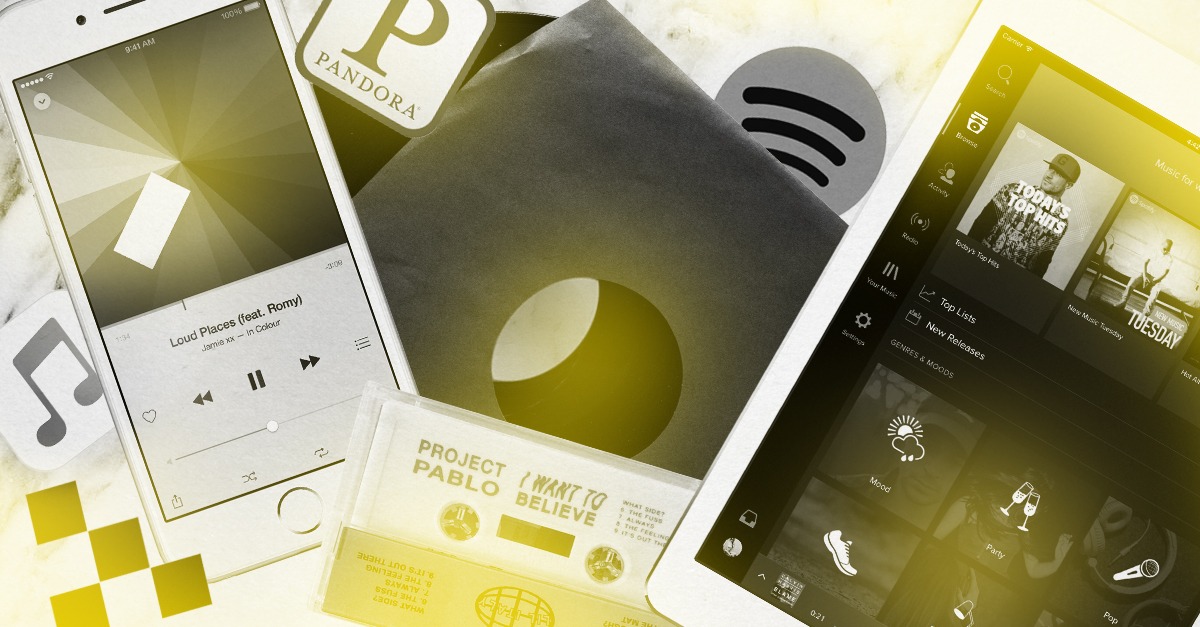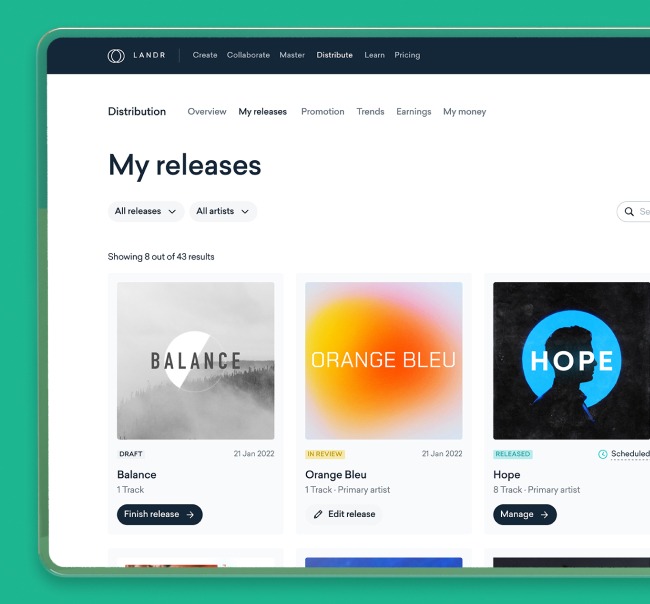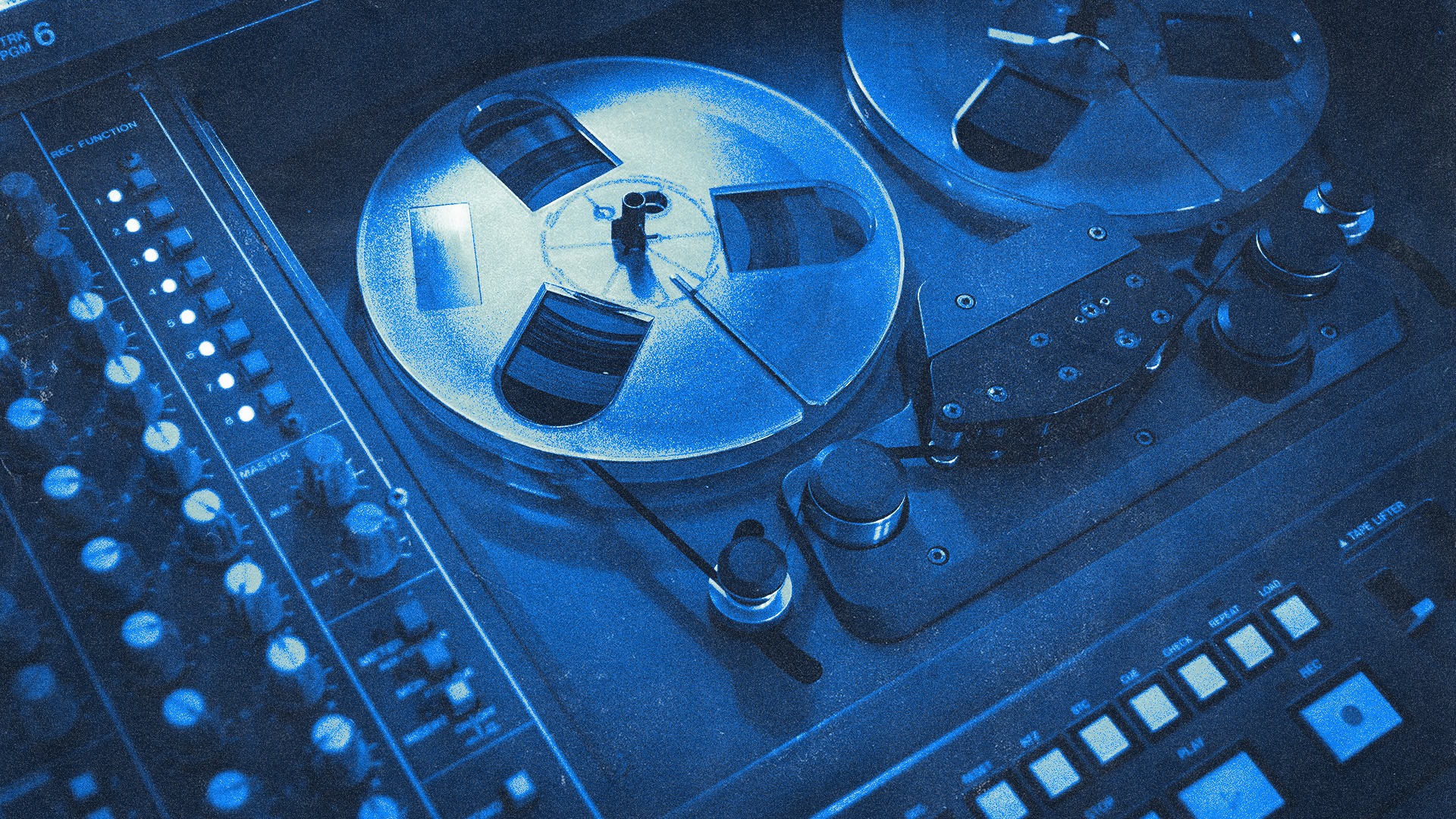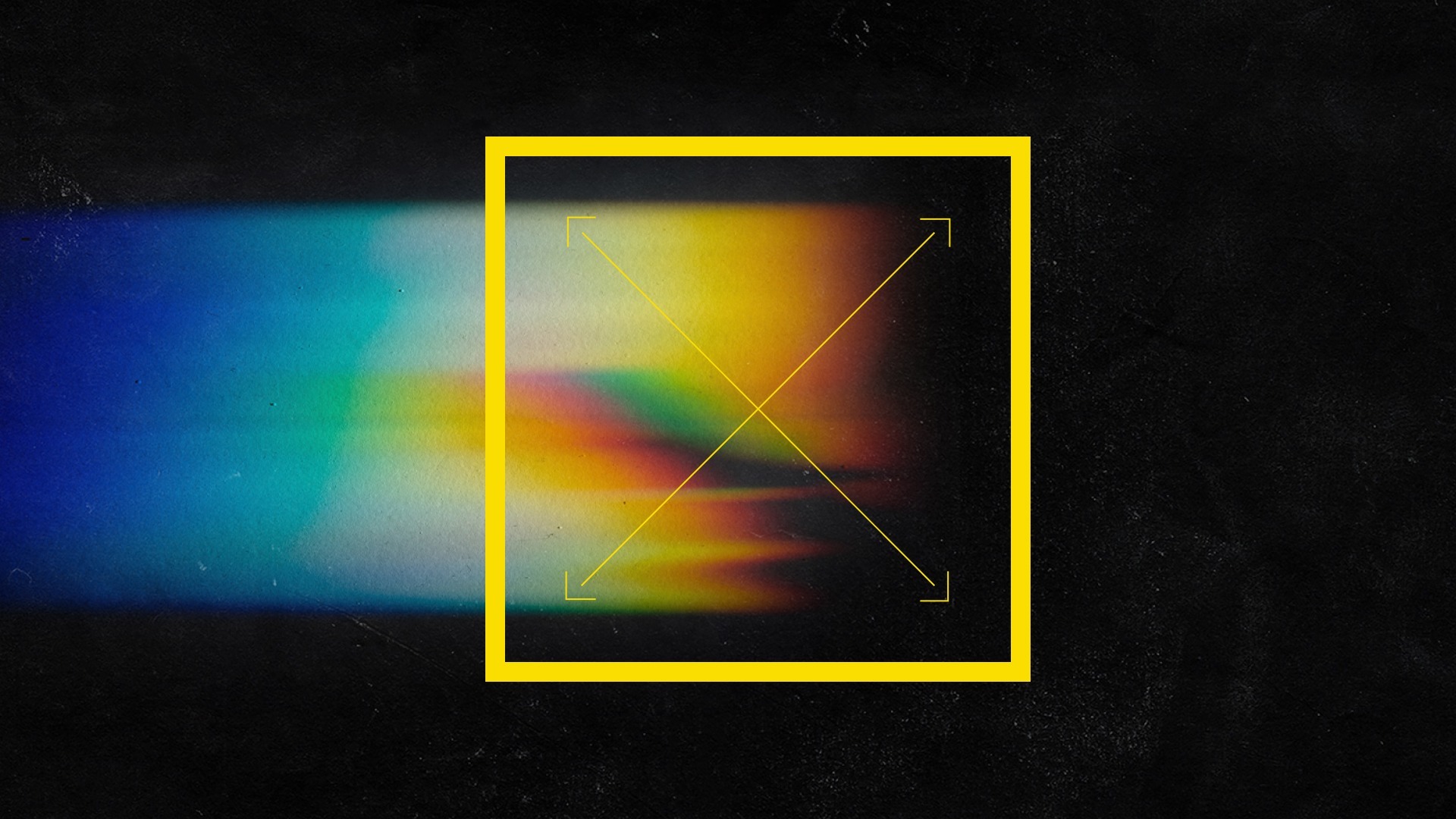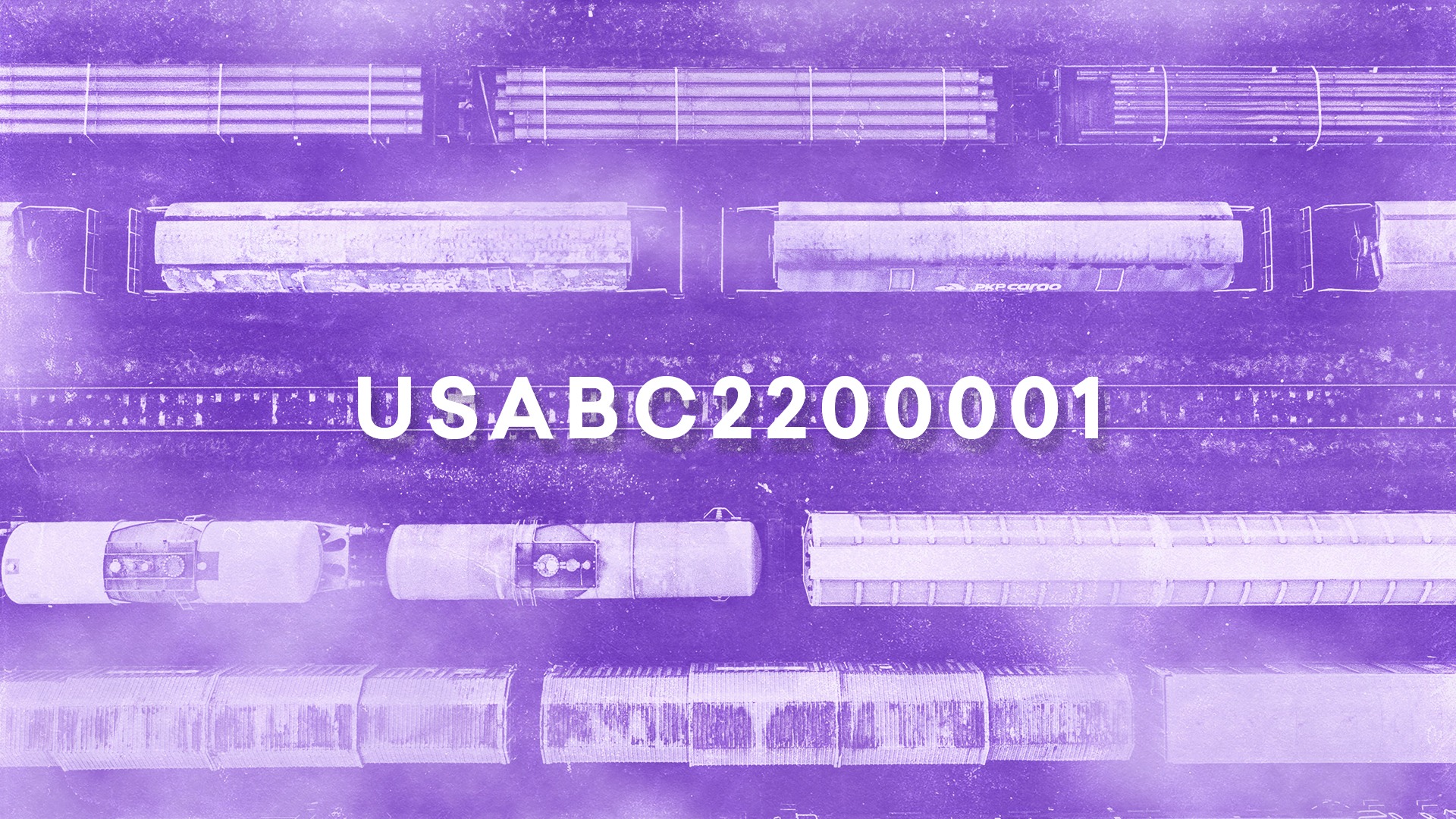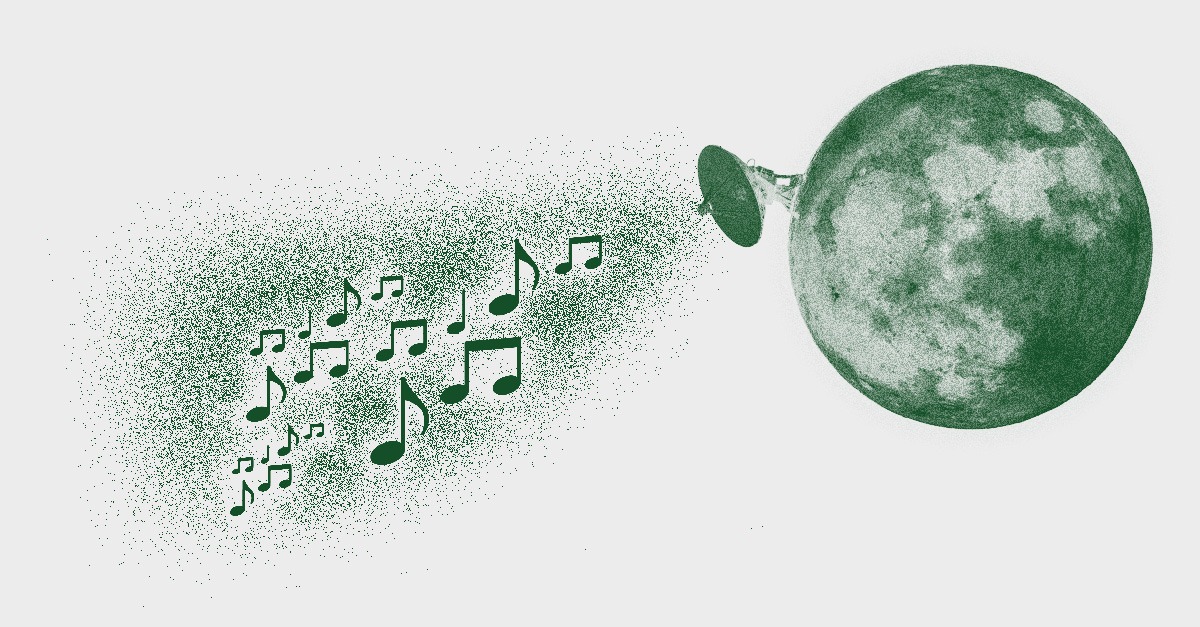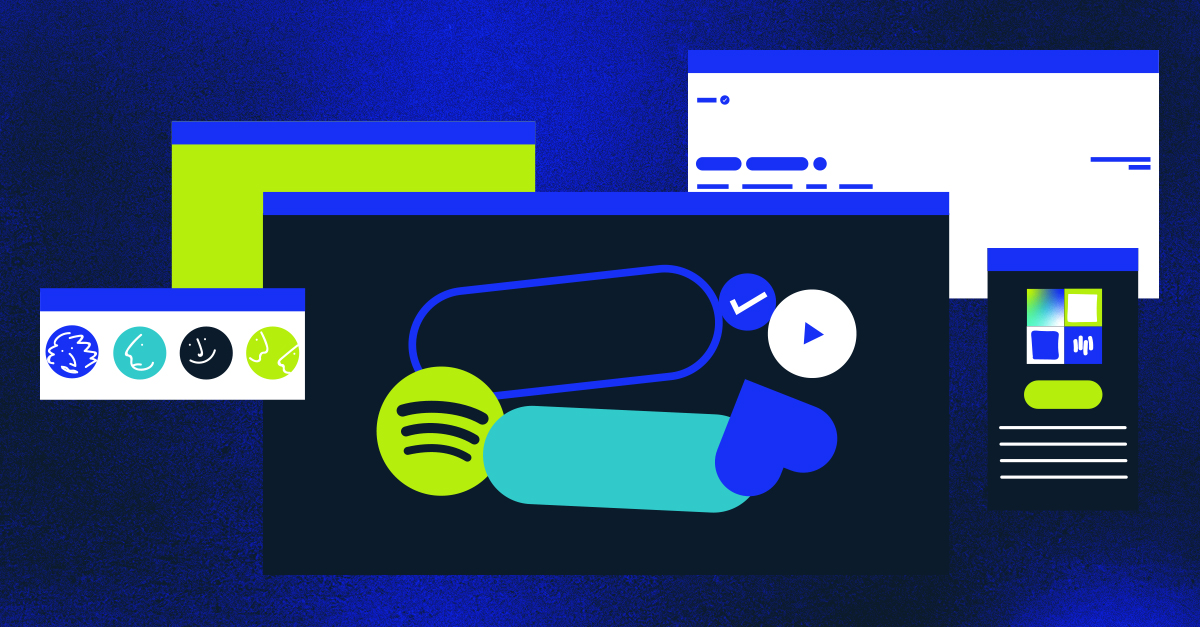
How to Get Your Music on Spotify in 9 Steps

Getting your music on Spotify is a major step in growing your audience and earning royalties from streaming.
But how exactly do you make it happen in the first place? Fortunately, it’s a lot easier than you might think.
Assuming that you don’t have any music on the platform already, we’ve put together a simple guide that will help you release your music on Spotify and take advantage of what it has to offer.
Let’s get to it!
How to get your music on Spotify
How to get your music on Spotify in 9 steps
1. Finish and prepare your music
Getting your music on major platforms is surprisingly easy — the hard part is finishing the music in the first place.
So, if you have a finished single, EP, or album that you’re proud of and ready to release, nice work!
The very first step you should take before you release your music on Spotify is to develop a vision for the release.
If it’s multiple tracks, think about the track order. Sequencing an album can be an art in and of itself, but since you’re starting out, you’re more likely releasing a single or EP.
Order your songs so that your listeners will hear the strongest material first. This will help your release make the best first impression as people discover it on Spotify.
It’s also important to make sure you’ve settled on the final titles and taken note of any credits you’ll need to give, such as vocalists or a mixing engineer.
This information will come into play later when you’re setting it up through your distributor.
Learn how to get your music on Spotify and succeed after your tracks go live.
2. Choose a distributor that will get your music on Spotify
In order to release your music on Spotify, you’ll have to go through a music distributor.
A music distributor is the link between an artist and a digital service provider (DSP) like Spotify or Apple Music.
This means that you’ll be uploading and submitting your release to a distributor, and the distributor will facilitate the process of getting that release (and your artist profile) on Spotify.
Gaining access to music distribution is easier than it’s ever been, but there are a lot of different distributors to choose from.
Major players include LANDR, DistroKid, CD Baby, and TuneCore. Different distributors will have different costs, advantages, and disadvantages.
It’s best to opt for a distributor that:
- Releases your music to all major music and social media platforms
- Doesn’t take a commission from your earnings
- Doesn’t remove your releases if you cancel
- Will get your releases up in a short timespan if needed
- Provides you with good technical support
Be sure to look carefully at the overall value and functionality that a distributor offers — some will give you more musician-centric features than others.
3. Master your release
Mastering is the process of making final adjustments to your songs so that they achieve optimal loudness, clarity, and balance.
It also helps to ensure that your songs sound consistent across different speaker types and formats.
So, when releasing your music on Spotify, the files you upload to your distributor’s system should be the final mastered WAV files.
Traditionally, mastering is done by professional mastering engineers in dedicated studios with a range of hardware and software tools.
If you prefer to have your music professionally mastered and can afford it, it’s worth considering.
But most beginners can struggle to access these services, which is why so many musicians and producers use LANDR’s AI-based mastering tool.
No matter how you master your songs, it’s also essential to think about how your first release on Spotify is presented visually…
4. Add your artwork
A lot of the time, people will experience the artwork for your release before they even hear your music.
This first impression is pretty crucial for conveying the overall feel of your work, so it’s important to take it seriously.
It should be distinctive, eye-catching, and representative of your creative vision.
When it comes to releasing your music on Spotify, the platform has its own set of technical specifications for artwork images.
Remember, however, that you’ll be uploading your music and your artwork to your distributor’s system and not Spotify directly.
This means that it’s best to follow the artwork specifications of your distributor.
As an example, LANDR’s artwork upload form outlines all of the specifications that your image needs to meet:

Following the guidelines of your distributor will ensure that your artwork is compatible and presentable not just on Spotify, but also everywhere else your distributor will place your music.
5. Set up and submit your release
When releasing your music on Spotify, your distributor will need certain types of metadata for various purposes.
You’ll enter all of this information in the required fields when creating your release in your distribution account.
Examples of this data include:
- Track titles
- Genre tags
- Song ISRCs
- Credits for anyone who worked on the music
- Whether or not you’re uploading a cover song
- Who owns rights to the composition and the master
- The start time of each song’s 30-second preview
- Other information depending on the release
These are all important for how your music is managed and discovered on Spotify (and all other DSPs), as well as legal factors like copyright and music publishing.
When it comes to release dates, some distributors will give you more flexibility than others.
LANDR, for example, allows you to request the soonest possible release (about 1-3 days for Spotify) or to specify a release date at least 14 days in the future.
If you haven’t yet started to promote your release, we recommend that you schedule it far enough in advance that you have time to build some hype. We’ll dive into this in the next section
Once all of your information has been entered accurately and you’ve settled on all of your relevant settings, you can submit your release to your distributor’s system.
6. Promote your music
Releasing music on Spotify can be a key part of building your exposure as an artist.
But before your first release goes up on the platform, you’ll need to promote it in other contexts.
Announcing it on social media, for example, is a must. But it’s wise to be creative and personal about how you do it.
Instead of just a basic announcement, create more distinctive posts. Clips of you working in the studio or talking about what the material means to you are good examples.
You should also reach out to online publications, YouTubers, people with radio shows, or other outlets.
Some of them may be interested in setting up an exclusive track premier, writing up a review to be posted after release, or featuring your music in a mix.
This process of building visibility and hype takes time, which is why it’s often recommended to set your music’s release date for at least four to six weeks after your announcement.
It will also allow you to keep people aware of your upcoming release without overloading or spamming them, which can make people disengage.
The more successful your promotional efforts are, the more likely you’ll get steady streams and earnings on Spotify.
7. Claim your Spotify for Artists profile
Spotify for Artists is the system within Spotify that allows artists to manage how they’re presented on the platform, better understand their fans, and potentially improve their exposure and streams.
With Spotify for Artists, you can set an artist image and other visuals, view stats and analytics about your listenership, pitch your music for playlist consideration, and more.
In order to access your Spotify for Artists account, you have to have at least one live release on Spotify. This can even just be one single.
The actual process for claiming your profile will vary depending on your distributor. If you’re using LANDR, you can gain access instantly through your distribution hub one you’ve submitted your first release.
Since you won’t have a Spotify for Artists account before your first release is live, it may be worthwhile to put out a minor single before doing a more significant release.
This will give you the advantage of familiarizing yourself with the tools in Spotify for Artists, in addition to making you eligible for being playlisted, which we’ll explain in step nine.
8. Use Spotify’s tools to your advantage
Releasing your music on Spotify can definitely grow your fanbase, but making the most of the platform also means using the tools it provides.
Once your first release is up, take some time to delve into what Spotify for Artists can do.
Regularly check in with your stats and analytics to learn which songs are resonating with people the most, the regions where your music is getting the most attention, and other insights.
You should also get creative with your artist profile, have a well-written bio, and use your Artist Pick to showcase the strongest song on your first release.
If you want to strengthen the aesthetic presentation of your release, use the Canvas feature to pair songs with short looping visuals.
Take a look at this page to get a full picture of the tools that are available in Spotify for Artists.
9. Get your music playlisted
Playlists are a major part of how listeners discover music on Spotify and how artists use the platform for promotion.
There are several different types of Spotify playlists — some are listener created, some are algorithmically generated, and some are curated by Spotify’s internal editorial team.
Getting on a Spotify editorial playlist is often the biggest goal, but all types of playlists have their own value for the exposure and listenership of your music.
If you want your music in an editorial playlist, we recommend you pitch to the editorial team.
However, you can only do this when you already have a Spotify for Artists account, and it must be at least seven days before the release date for the material you want playlisted.
In other words, your very first release on Spotify can’t be considered for playlisting. This is another reason why it can be a good idea to establish your profile with a minor single.
Once you’ve familiarized yourself with the platform, you can put out a more significant second release that will be eligible for playlisting.
After getting your music on Spotify
While releasing your music on Spotify can be a big step in growing your fanbase, it’s only one part of the overall journey.
Once you’ve chosen a distributor, getting your music on major platforms will be one of the easiest parts of the process.
The place where most of your energy should go is, of course, crafting music that is a powerful and distinctive expression of your creative vision.
When you put this together with consistent and well-planned promotion, you’ll be on your way to getting your music the recognition it deserves!
Gear guides, tips, tutorials, inspiration and more—delivered weekly.
Keep up with the LANDR Blog.

